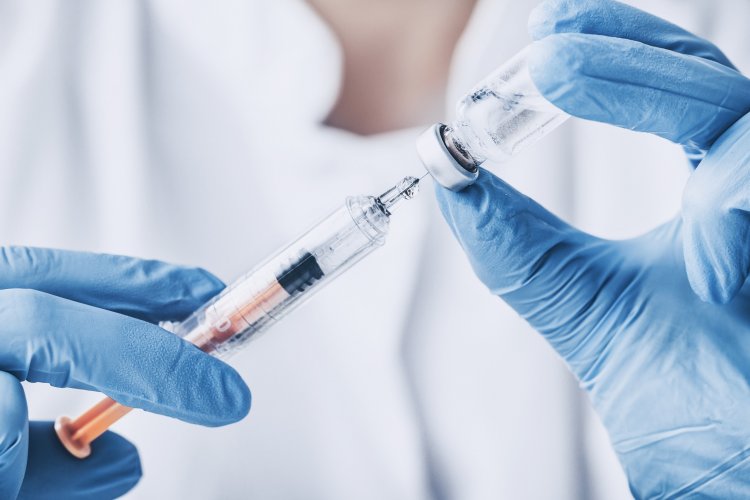Prevention is easier than dealing with the consequences. This is an oft-repeated saying, particularly with the advent of the COVID-19 pandemic. Doctors say we’ll be able to get back to our usual lives as soon as the majority is immunized either by having recovered from the disease or by being vaccinated.
With vaccinations the humanity has completely or almost completely forgotten the diseases that were killing people by hundreds of thousands or millions. We will tell you about vaccines that have profoundly changed people’s lives.
Smallpox
According to various data, 300 and 500 million people died of the naturally occurring smallpox in the 20th century alone. The number of preceding deaths from the disease is almost impossible to calculate. Smallpox killed 10 to 20 people out of a hundred infected, with another 15 percent left blind or scarred for life: when sick, the person is covered with purulent pustules.
The idea that a mild form of the disease will confer future protection against complications has been entertained long ago. Different forms of vaccines were experimented with in several countries. In ancient China, people inhaled powder of dried scabs from smallpox patients or inserted plugs of cottonwool soaked with smallpox-infested pus into their ears. In Africa, a pus-impregnated thread was pulled through the skin using a needle.
The Smallpox vaccine that eventually defeated the disease has been known since the late 18th century when the English doctor Edward Jenner proved that the contagious, but not deadly, cowpox protects reliably against subsequent disease in severe form. In the 1800s, Jenner’s vaccine was recognized as mandatory in the English Army and in the Navy. It later spread to English colonies, North America and Europe.
Despite the presence of a reliable remedy, people continued to die of smallpox died for almost 200 years after the invention of the vaccine. In 1967, the World Health Organization decided on a mass vaccination of the mankind – and the disease was eradicated worldwide in 10 years. The last recorded case of infection with natural smallpox occurred in England in 1978, and now there is no need to vaccinate against the disease.
Poliomyelitis
The poliomyelitis virus affects the nervous system: the incurable paralysis mostly affects the legs but one in ten die of asphyxia after lung paralysis. Children are most prone to polio infection many of whom remain disabled in the end.
In the mid-20th century, the viral disease became an epidemic in Europe and North America, including an outbreak of the disease affecting the Soviet Union: between 10 and 13.5 thousand cases were reported in the country in the mid-1950s.
The situation was corrected by vaccines, which were developed in different countries. In the Soviet Union, more than 100 million people, or 80% of the population, were vaccinated against polio in the 1960s and 1961. Incidence decreased more than 200-fold, with number of recorded cases declining to 560 in 1963 and 61 in 1967. Polio remains endemic in Afghanistan and Pakistan where dozens of cases are recorded every year.
Measles
High temperature, rash. Severe cases are characterized by diarrhea, pneumonia and meningitis (inflammation of brain membranes). The highly contagious measles virus spreads by coughing and sneezing. Before the vaccine was invented the disease had been killing more than two and a half million people a year.
The first measles vaccine was released in 1963. Scientists say measles is transmitted only between humans, can be diagnosed with certainty, and existing vaccines reduce the spread of the disease quite effectively. Thus, the disease, in theory, can be eliminated completely, but to achieve that goal,95% of the population must be vaccinated.
In recent years, the incidence of measles has risen again in the United States and Europe which is associated with the position held by “anti-vaxxers.” In 2018, about 140,000 people died of measles in the world, most of them children under the age of five. For example, in the United States in 2018, the number of measles cases rose 6 times compared to 2017. In a number of states, fines and prison sentences were imposed on unvaccinated persons for appearing in public places.
Perspective Developments
Previously vaccine development took decades; the coronavirus pandemic has shown that state-of-the art scientific achievements enable vaccine production to start in a fairly short time.
The development of innovative vaccines has been going on for years. For example, in April, German scientists reported on completing the first phase of clinical trials of a vaccine against glioma, a brain tumor. So far it is still early to say that getting a shot would let us forget completely about the risk of cancer. Still, there are certain types of cancer that may be caused by viruses. When the viruses are kept away from the body, the likelihood of falling ill is reduced dramatically.
And at the end of last year, the Vector Center reported that a Russian vaccine against the human immunodeficiency virus is capable of producing antibodies: it was confirmed during the Phase I clinical trials. Trials are ongoing and efficacy can be proven conclusively by further studies.
“It is necessary to understand that coronavirus is not smallpox, cholera, or plague,” said Vitaly Zverev, a virologist and RAS Academician, in an interview for our portal. He believes we will only be able to get back to our normal life after most of us have obtained immunity, whether by recovering from the disease or by getting vaccinated. And history proves that vaccines have saved millions of lives over the past hundred years.
Photo: scyther5 / ru.123rf.com
Based on data by BBC and Rospotrebnadzor






















